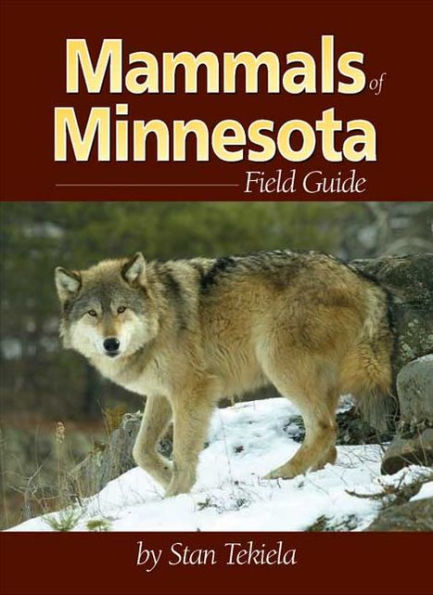Read an Excerpt
White-tailed Deer
Odocoileus virginianus
Family: Deer (Cervidae)
Size: L 4-7' (1.2-2.1 m); T 6-12" (15-30 cm); H 3-4' (1-1.2 m)
Weight: M 100-300 lb. (45-135 kg); F 75-200 lb. (34-90 kg)
Description: Reddish brown during summer, grayish brown during winter. Large ears, white inside with black edges. A white eye-ring, nose band, chin, throat and belly. Brown tail with a black tip and white underside. Male has antlers with many tines and an antler spread of 12-36" (30-90 cm). Female has a thinner neck than male and lacks antlers.
Origin/Age: native; 5-10 years
Compare: Slightly smaller size than the much less common Mule Deer (pg. 269), which has a small thin white tail with a black tip.
Habitat: all habitats
Home: no den or nest; sleeps in a different spot every night, beds may be concentrated in one area, does not use a shelter in bad weather or winter, will move to a semi-sheltered area (yard) with a good food supply in winter
Food: herbivore; grasses and other green plants, acorns and nuts in summer, twigs and buds in winter
Sounds: loud whistle-like snorts, male grunts, fawn bleats
Breeding late Oct-Nov mating; 6-7 months gestation
Young: 1-2 fawns once per year in May or June; covered with white spots, walks within hours of birth
Signs: browsed twigs that are ripped or torn (due to the lack of upper incisor teeth), tree rubs (saplings scraped or stripped of bark) made by male while polishing antlers during the rut, oval depressions in snow or leaves are evidence of beds; round, hard brown pellets during winter, cylindrical segmented masses of scat in spring and summer
Activity: nocturnal, crepuscular; often moves along same trails to visit feeding areas, moves around less when snow is deep
Tracks: front hoof 2-3" (5-7.5 cm) long, hind hoof slightly smaller, both with a split heart shape with a point in the front; neat line of single tracks; hind hooves fall near or directly onto fore prints (direct register) when walking
Stan’s Notes: This deer is the most common large mammal in Minnesota and has the most widespread range. Originally not found throughout the state, its range expanded dramatically in the mid- to late 1800s due to logging and overhunting of native elk and caribou. Now found in nearly every habitat in every part of Minnesota. Also known as Virginia Deer or Whitetail.
Much longer guard hairs in winter give the animal a larger appearance than in summer. Individual hairs of the winter coat are thick and hollow and provide excellent insulation. Falling snow often does not melt on its back.
In summer, antlers are covered with a furry skin called velvet. Velvet contains a network of blood vessels that supplies nutrients to the growing antlers. New antler growth begins after the male (buck) drops his antlers in January or February. Some females (does) have been known to grow antlers.
Deer are dependent on the location of the food supply. In winter large groups move to low moist areas (yards) that have plenty of white cedar trees. This yarding behavior helps keep trails open and provides some protection from predators. Eats 5-9 pounds (2.3-4.1 kg) of food per day, preferring acorns in fall and fresh grass in spring. Its four-chambered stomach enables the animal to get nutrients from poor food sources such as twigs and eat and drink substances that are unsuitable for humans.
Able to run up to 37 miles (60 km) per hour, jump up to 8 1⁄2 feet (2.6 m) high and leap 30 feet (9.1 m). Also an excellent swimmer.
The buck is solitary in spring and early summer, but seeks other bucks in late summer and early fall to spar. Bucks are polygamous. The largest, most dominant bucks mate with many does.
For a couple weeks after birth, fawns lay still all day while their mother is away feeding. Mother nurses them evenings and nights.






